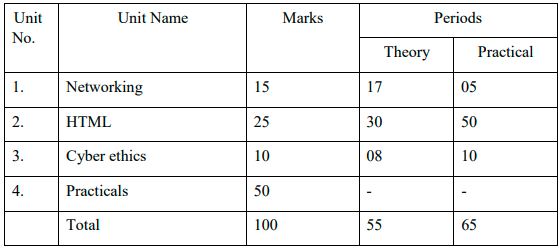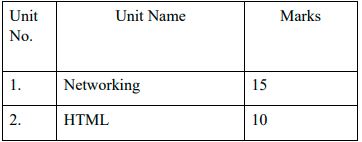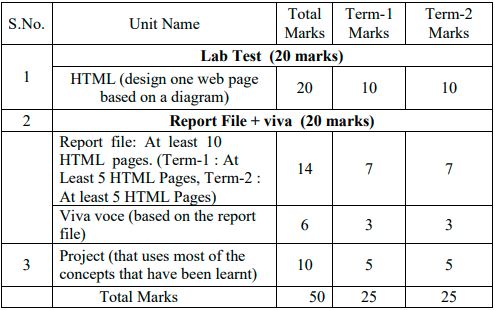Table of Content
| Learning Outcomes |
| Distribution of Marks and Periods TERM I + TERM II |
| CBSE Class 10 Computer Applications Syllabus 2022-2023 (Unit-wise) |
| Breakup of marks for the practicals |
Check>>>Class 10 CBSE Math Preparation Tips: Check These Tips To Ensure Full Marks
Learning Outcomes
- The ability to design a simple webpage
- The ability to include images, audio, and video in an HTML page.
- The ability to utilise style sheets to enhance the appearance of online pages.
- The ability to communicate with a web server and record the details of a user's request.
- The ability to adhere to basic internet ethics
- The ability to become acquainted with network principles.
Register here to prepare for Board Exams: Click Here
Distribution of Marks and Periods TERM I + TERM II
Also Check-
CBSE Class 10 Model Papers for Term 1 Exam : Download In PDF
CBSE results delayed for TERM-1 EXAMS 2022-23
TERM II
To check the preparation tips for scoring maximum marks in CBSE class 10 Social Studies Board Exam, click here.
CBSE Class 10 Computer Applications Syllabus (Unit-wise)
Unit 1: Networking
- Internet: World Wide Web, web servers, web clients, web sites, web pages, web browsers, blogs, news groups, HTML, web address, e-mail address, downloading and uploading files from a remote site. Internet protocols: TCP/IP, SMTP, POP3, HTTP, HTTPS. Remote login and file transfer protocols: SSH, SFTP, FTP, SCP, TELNET, SMTP, TCP/IP.
- Services available on the internet: information retrieval, locating sites using search engines and finding people on the net;
- Web services: chat, email, video conferencing, e-Learning, e-Banking, eShopping, eReservation, e-Governance, e-Groups, social networking.
- Mobile technologies: SMS, MMS, 3G, 4G.
- Embed audio and video in a HTML page.
- Create a table using the tags: table, tr, th, td, rowspan, colspan
- Links: significance of linking, anchor element (attributes: href, mailto), targets.
- Cascading style sheets: colour, background-colour, border-style, margin, height, width, outline, font (family, style, size), align, float Suggested Lab Exercises
- Create static web pages.
- Use style sheets to enforce a format in an HTML page (CSS).
- Embed pictures, audio and videos in an HTML page.
- Add tables and frames in an HTML page.
- Decorate web pages using graphical elements.
- Create a website using several webpages. Students may use any open source or proprietary tool.
- Work with HTML forms: text box, radio buttons, checkbox, password, list, combo box.
- Write a blog using HTML pages discussing viruses, malware, spam and antiviruses
- Create a web page discussing plagiarism. List some reported cases of plagiarism and the consequent punishment meted out. Explain the nature of the punishment in different countries as per their IP laws.
Unit 3: Cyber ethics
- Netiquettes.
- Software licenses and the open source software movement.
- Intellectual property rights, plagiarism and digital property rights.
- Freedom of information and the digital divide.
- E-commerce: Privacy, fraud, secure data transmission.
Breakup of marks for the practicals:
This full syllabus can be downloaded from the following link:
Practical consists of how many marks ?
65Theory is of how many marks ?
What is the learning outcomes?
2. Ability to embed images, audio and video in an HTML page
3. Ability to use style sheets to beautify the web pages.
4. Ability to Interface a web site with a web server and record the details of a user's request.
5. Ability to follow basic cyber ethics
6. Ability to familiarize with network concepts.
Which chapters are included in unit 2 ?
The unit networking consists of how many marks ?
What is Safalta School Online?
Safalta school online is an initiative of Safalta Pvt Ltd to help students score well in their exams by sitting in their homes. We provide online lectures that are very beneficial for the students.
We also offer free E-books and Mock test papers for the preparation.






